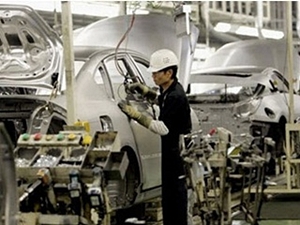BANGKOK, July 27 – Thailand’s Manufacturing Production Index (MPI) in June stood at 182.39, recording a contraction of 9.6 per cent year-on-year after showing growth in May, according to the Office of the Industrial Economics (OIE).
Speeding production in hard disk drive and electric circuit industries accounted for 15 per cent of MPI growth.

OIE Director Sophon Pholprasit said that the Manufacturing Production Index (MPI) in the second quarter of this year contracted 1.6 per cent, compared to the same period last year.
The capacity utilisation rate stood at 69.2 per cent, resulting from continuing recovery in the industrial sector after last year’s devastating flood.
As of the end of June, 658 plants or 78 per cent of all 839 plants in seven industrial estates hit by the flood have resumed production.
Exports in June rose 3.3 per cent year-on-year, mainly driven by auto exports. Electrical appliance exports in the second quarter grew 12 per cent year-on-year while electronic exports shrank 17 per cent, improved from 23 per cent contraction in the first quarter of this year.
The food industry shrank 21 per cent, contrary to normal growth earlier due to decreased imports to the European Union countries and the US.
The auto industry in the second quarter grew 46.59 per cent year-on-year owing to rapidly rising production to meet overdue orders.
Meanwhile, imports of raw material excluding gold shrank 12.1 per cent year-on-year, reflecting a possible drop of output in the future while imports of capital goods grew 9.9 per cent.
Regarding projections of the industrial growth rate, the OIE sees a 4.5-5.5 per cent GDP growth and a 6-7 per cent expansion of the MPI. This was attributed to the government’s income-generating policies, including crop pledging scheme, raising the minimum wage and the Bt350 billion loan decree for water management.
On the industrial trend for July, Mr Sophon said that the International Monetary Fund lowered its world economic growth projection to 3.5 per cent from its earlier projected 3.6 per cent in April, indicating a possible slowdown of Thai industry amid risks from a euro-zone debt crisis.
Thai industrial exports to European markets account for an 11 per cent share of the sector, while the export ratio to China, one of Thailand’s major export markets, accounted for 12 per cent.
China’s demand for Thai goods may drop after the slowdown of its exports to Europe.




